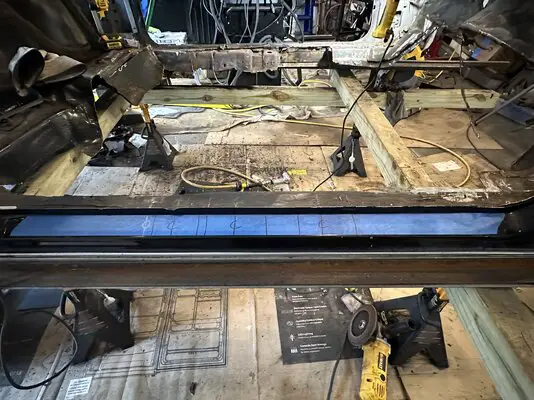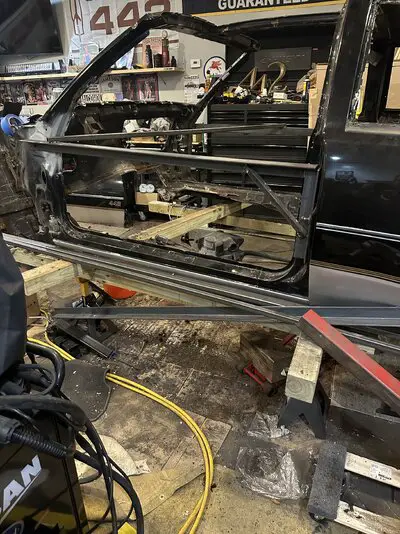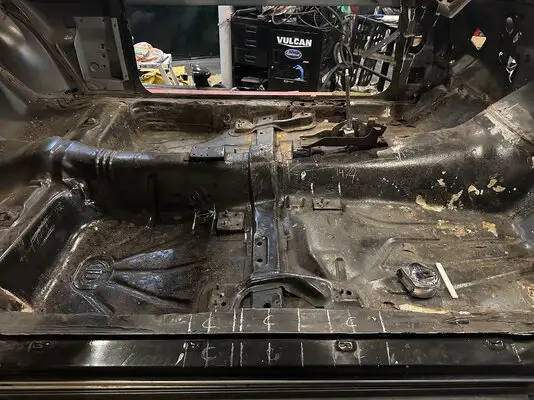Well I can tell you my experience with my 87 442. The floor wasn’t great but even worse was both sides from front to rear with rust. So I decided I was going to replace everything. Now I’m no welder either but I bought a mig welder and a plasma cutter and watched a bunch of videos and jumped in. So here’s what I can say.
The plasma cutter was nice but not necessary.
The bracing is definitely needed. I’d give you mine I used if you were closer ( I’m in north east Ohio)
Also the floor won’t come with the bracing and tunnel mounts that had to be added so lots of measurements before the floor is removed. I used blue tape on the sides and marked the measurements for the bracing and seat mounts.
Also when cutting the floor out don’t cut up the sides where the new floor will attach or you will need to patch it in.
I’ll include some of my pictures. Mine came out solid and nice. Just take your time. And definitely want that engine and trans out. Just my opinion.
The plasma cutter was nice but not necessary.
The bracing is definitely needed. I’d give you mine I used if you were closer ( I’m in north east Ohio)
Also the floor won’t come with the bracing and tunnel mounts that had to be added so lots of measurements before the floor is removed. I used blue tape on the sides and marked the measurements for the bracing and seat mounts.
Also when cutting the floor out don’t cut up the sides where the new floor will attach or you will need to patch it in.
I’ll include some of my pictures. Mine came out solid and nice. Just take your time. And definitely want that engine and trans out. Just my opinion.








